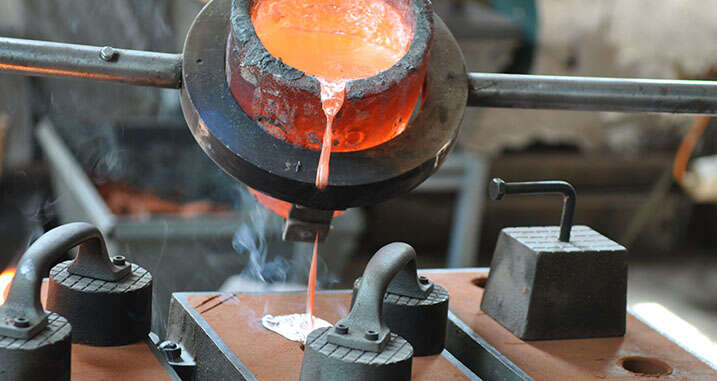Aluminum is used in many different industries, such as construction, transportation, and food as it forms alloys with many materials. This versatility and light weight make aluminum and its alloys especially good for industries where losing weight is important, such as automotive and aerospace.
Yet aluminum casting is far from straightforward. Careful control of the elements within the melt is essential if the final material is to have the required properties. The most effective way of melt control is analysis with optical emission spectroscopy (OES). However, not all OES instruments are equal, and you need to be especially careful with aluminum as some of the elements that must be controlled to extremely low limits may not be detected by some analyzers.
The new OE720 spark spectrometer from Hitachi High-Tech is designed to deliver high-performance at a mid-range price. This means that elements that normally require a specialist instrument, such as phosphorus and antimony, can be detected at low detection limits by the OE720.

The newly designed optical system of the OE720 analyzer gives next-level optical resolution, and the CMOS detector technology ensures that a wide range of elements can be detected at extremely low limits. This means that phosphorus can be detected down to 20 ppm in near eutectic and hyper-eutectic aluminum-silicon alloys, and antimony, bismuth, lithium, strontium, and sodium can be controlled, ensuring optimal structural modification.
This high-performance capability allows you to verify that the tramp elements P, Ca, Bi and Sb within the aluminum melt meet the 120 ppm maximum combined total.
Performance of the OE720 for key aluminum elements:

Download the full application note
There are two models within the OE series, the OE720 and OE750. Both deliver high performance across the entire spectrum of elements within metal. The OE720 will detect all non-gaseous elements within the melt, and the OE750 adds gas detection capability, which is not needed for aluminum analysis.
Both models benefit from these innovations:
We’ve put together a solution package for aluminum foundries with a special package price, so you can cover the quality control throughout the complete process: the handheld LIBS Vulcan Optimum+ for fast non-destructive sorting of incoming goods and the OE720 spark spectrometer for the melt control. Purchase together and you can save up to $4,000. Find out more.
You might also be interested in:
Our full range of spark OES instruments
View an on-demand spark OES demo
Book a 1:1 live demo
Guide: How to achieve optimal melt control for non-ferrous casting with OES